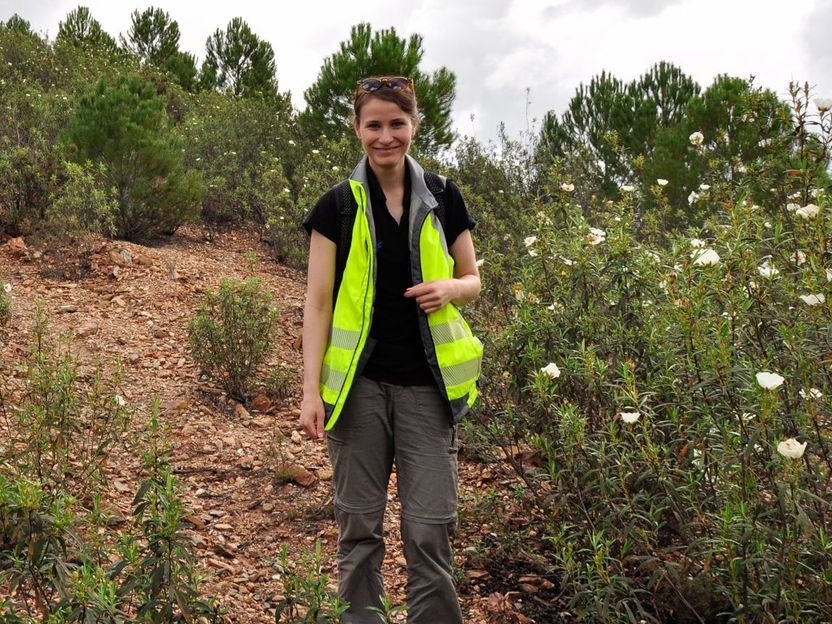The color play of mineral resources
Finding rare earths: Dr. René Booysen receives the L'Oréal-UNESCO Prize for Women in Science for her exploration research
Advertisement
Dr. René Booysen researches the exploration of mineral deposits. At the Helmholtz Institute Freiberg for Resource Technology (HIF), belonging to the Helmholtz-Zentrum Dresden-Rossendorf (HZDR), she develops sensor-based exploration techniques to identify resources in a non-invasive way. Each year, the UNESCO and the Fondation L'Oréal honor femal researchers who have contributed to overcoming today´s global challenges. Booysen's exploration research addresses one of these challenges. For the scientific excellence of her work, the South African researcher receives the award within the regional program South Africa National Young Talents Programme.

Dr. René Booysen, Scientist at Helmholtz Institute Freiberg for Resource Technology in the Exploration Department
HZDR/HIF
Current times highlight how important raw materials are, but also how dependent we are on them. Especially Rare Earth Elements (REE) are essential resources to ensure the energy transition, e-mobility and green technologies. Conventional exploration methods are costly, time-consuming and often not environmentally friendly, particularly in remote areas. Dr. René Booysen and her colleagues of the exploration department at the HIF developed a novel approach to detect and assess REE deposits.
“We employ drones with own developed hyperspectral sensors to detect REEs at the Earth’s surface,” says Booysen. “The sensors can detect tiny changes in the infrared light not visible to the human eye. This characteristic spectral information can be used to identify rock types over a large area and to target potential resource occurrences.” Hyperspectral Imaging was also the topic of her PhD study she completed this year at the University of the Witwatersrand in Johannesburg (South Africa).
The UNESCO and the Fondation L'Oréal are honoring female scientists like Booysen to raise awareness of their research and women in science. After all, according to UNESCO statistics, only 33 percent of researchers are female globally. The award therefore not only highlights the achievements of women in science, but also aims to overcome stereotypes at the same time. The L'Oréal-UNESCO for Women in Science South Africa National Young Talents Programme is being awarded for the fourth time and aims to promote young South African women in science. The program honors six talented women for their research in science, technology, engineering and mathematics (STEM).
"I am thrilled to receive this award, which highlights the scientific work of women in particular," says the Freiberg-based researcher - as well as the Scientific Director of the HZDR, Prof. Sebastian M. Schmidt: "The award once again underlines the fact that excellent talents from all over the world are working at the HZDR. Our special initiatives and programs for promoting young women in science, are thus already showing success. The research of René Booysen and her colleagues at our Helmholtz Institute in Freiberg plays a central role in meeting the challenges in the energy sector. I am extremely pleased that this has been recognized with an award."
Other news from the department science
These products might interest you
Most read news
More news from our other portals
See the theme worlds for related content
Topic world Sensor technology
Sensor technology has revolutionized the chemical industry by providing accurate, timely and reliable data across a wide range of processes. From monitoring critical parameters in production lines to early detection of potential malfunctions or hazards, sensors are the silent sentinels that ensure quality, efficiency and safety.

Topic world Sensor technology
Sensor technology has revolutionized the chemical industry by providing accurate, timely and reliable data across a wide range of processes. From monitoring critical parameters in production lines to early detection of potential malfunctions or hazards, sensors are the silent sentinels that ensure quality, efficiency and safety.




































































